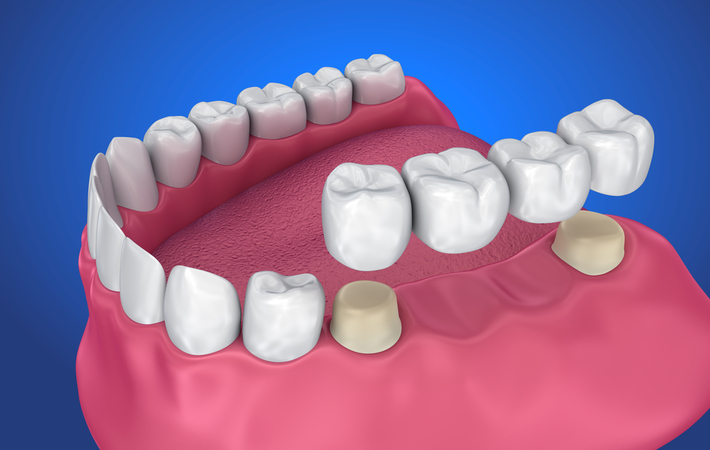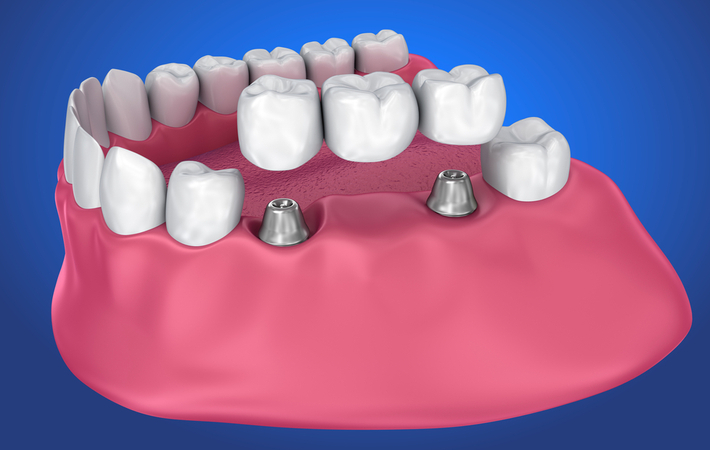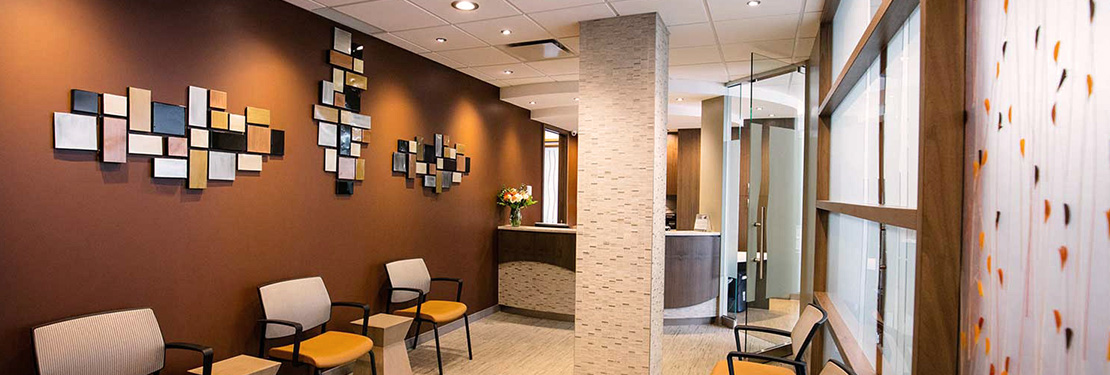Dental bridges can be a solution for missing teeth, but are they right for you? Here’s everything you need to know about dental bridges so you can make an informed decision alongside advice from your dentist.
What is a Dental Bridge, Anyway?
Also known as a fixed bridge or a fixed dental prosthesis, a dental bridge is a method used to replace one or more missing teeth. Dental bridges literally “bridge the gap” in areas where you’re missing teeth. Bridges are made up of one or more false teeth that are anchored to your natural teeth or an implant.
Traditional bridges are anchored to your natural teeth on both sides by placing a crown on top of your natural teeth. There are variations of traditional bridges known as cantilever bridges and Maryland bridges. Both types are anchored by your natural teeth, but cantilever bridges are only anchored on one side and Maryland bridges are anchored via a metal or porcelain framework (instead of a crown).

If you don’t have natural teeth remaining or your natural teeth aren’t in good condition, your dentist might recommend an implant bridge. Implant bridges work similarly to traditional bridges, except instead of being anchored on either side by your natural teeth, they are anchored by dental implants.

Depending on how many teeth you’re missing and where your missing teeth are in your mouth, dental bridges can be an alternative to dental implants or used alongside dental implants as a solution for missing or damaged teeth.
The Differences between Bridges & Implants
Bridges and implants can both be solutions to missing teeth, but for most patients, one option is recommended over the other. Which option is best for you will depend on the location of your missing teeth, the number of missing teeth, and your overall oral health. Your dentist can evaluate your needs and recommend the best solution for you.
If your dentist recommends a dental bridge, the healing process is typically shorter compared to implants, assuming you’re not getting an implant bridge. Dental bridges can usually be done in two visits; one visit to file your natural teeth to fit a crown and a second visit to install the crowns and bridge.
Implants, on the other hand, often take at least three visits; one visit to install the post (or implant), one to install the abutment, and one to fit your crown. Your mouth needs to heal between each appointment as well, so the process usually takes around 3 months from start to finish.
Once dental implants are installed, however, implants are usually permanent provided they are cared for properly. Dental bridges have a shorter installation and healing time, but need to be replaced every 10 years or so.
How Long do Bridges Last?
Dental bridges can last anywhere from 5 to 15 years. Provided you take good care of your bridge, you can expect it to last around 10 years. Bridges need to be cared for in the same way as natural teeth. Make sure you’re flossing and brushing your dental bridges to ensure they last as long as possible.
It’s also important to visit the dentist every 6 months for a dental exam and cleaning, especially if you have dental bridges. This gives your dentist the opportunity to thoroughly clean your bridge and examine it for wear and tear. If it’s been over 6 months since your last dental check-up or you’re interested in dental bridges, contact us and book an appointment. During your appointment, one of our dentists can evaluate your dental needs and determine if dental bridges are right for you.








